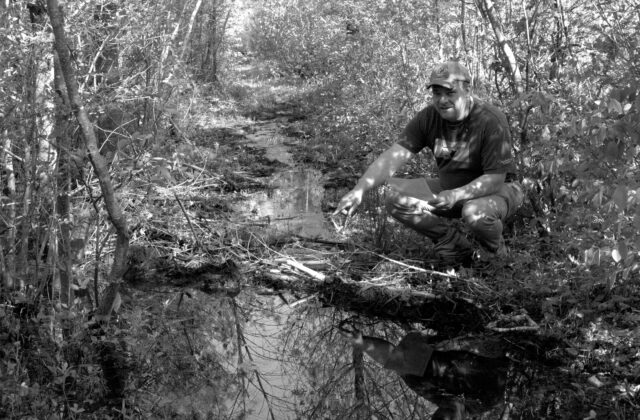Leave It to the Beavers
Rails to Trails group outsmarts the dam beavers
by Doug McDevitt
After a long winter of hard work, families in the communities surrounding Norfolk wanted a respite from their daily routine and Norfolk was the perfect summer getaway, so they boarded the Mountain Express that ran west from Hartford to Canaan. The huge 4-4-0, number seven locomotive chugged along the meandering rails, with black smoke billowing up and laying across its back, dissipating into the peaceful woodlands as the steam engine with its three passenger cars eventually pulled into Norfolk station.
Starting in 1871 and lasting until 1932, this trip was commonplace for the residents of Connecticut and helped to give life to Norfolk. As the automobile became more affordable and widespread, the rails became less and less important until they vanished into the pages of history. However, the legacy of the steam engine era is still around us. As one drives along Route 272, and elsewhere, remnants of that golden age are clearly visible. Old cuts in rocks that were blasted a hundred years ago mark raised paths that disappear into the forest. A group of dedicated visionaries, calling themselves Rails to Trails, or R2T for short, have devoted themselves to reclaiming parts of these pathways and modernizing them for the benefit of the community.
R2T is a subcommittee of the Norfolk Economic Development Commission and is headed by Bob Gilchrest. They are committed to developing a multiple use, handicapped-accessible trail system through Norfolk, using existing parts of the old Central New England rail bed. According to Gilchrest, the future of the trail would see it run through the woodlands from Ashpohtag Road, curving east and south into the heart of Norfolk, offering access to many parts of town, by bike or on foot, while avoiding hazardous, high-traffic areas such as Route 44.
Enjoying a nature walk along the old route used by the Mountain Express is a vision for the future of our community. Unfortunately, there are some community residents who clearly have their own independent vision. Enter Castor canadensis or, more easily pronounced, the beaver. Leave it to the beaver to throw a wrench, or branch, into the R2T plans. These large rodents have been busy road blocking the development of the trails, particularly on the Northbrook section. Beavers are building a barrier right across the trail and their dams have flooded a nearly six hundred foot portion.
Dave Beers, treasurer of R2T, said that their team has hired a biologist and beaver expert and helped direct the installation of a mechanism known as a “beaver deceiver”. Apparently, attempts to simply drain an area won’t work, as beavers hear the sound of water gurgling out of their pond and rush to plug the dike. A beaver deceiver is a drainage system designed to allow water to exit a pond without making the telltale sounds that alert keen beavers. Flooding is controlled, a manageable water level achieved and the beavers remain in their habitat.
The plan, say Beers and Gilchrest, is to co-exist with nature by raising the trail height and building boardwalks, allowing those using the trail to view the natural wonders created by the beavers, rather than removing them. However, a recent visit to the Northbrook section shows that the industrious beavers have created several more dams and lodges. Beers says that additional beaver deceivers will be needed.
The ultimate goal of R2T, according to Gilchrest, is to connect the Canaan and Winsted trails with Norfolk’s. This is a very long-term prospect, but one that can be met. Beers says that funding is the greatest barrier. One R2T fundraiser, the Tour de Forest, is a biking event that runs through town. The pandemic stymied the Tour last year, but Beers says it is back in 2021, scheduled for Oct. 9. There is also grant money available from a brewery in Stratford, Conn.
While Norfolk has many treasures, many more remain hidden, yet to be uncovered. R2T is trying to link the past and future natural beauty that surrounds us, while making it accessible for all to enjoy.
Learn more about the Norfolk Rails to Trails initiative at norfolkrailtrail.org.

